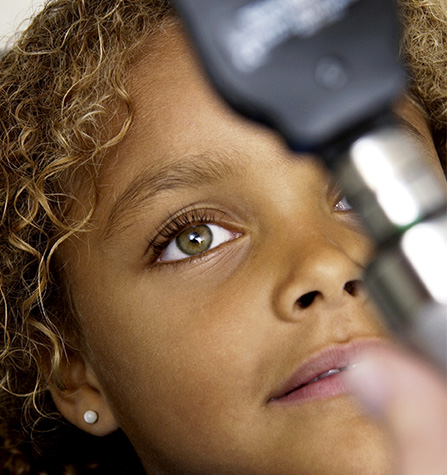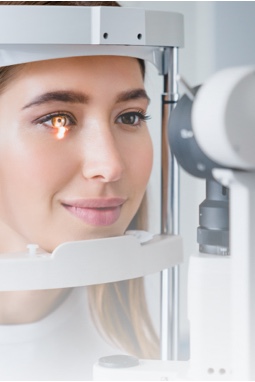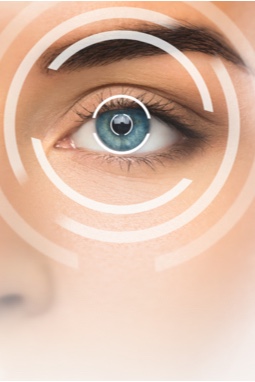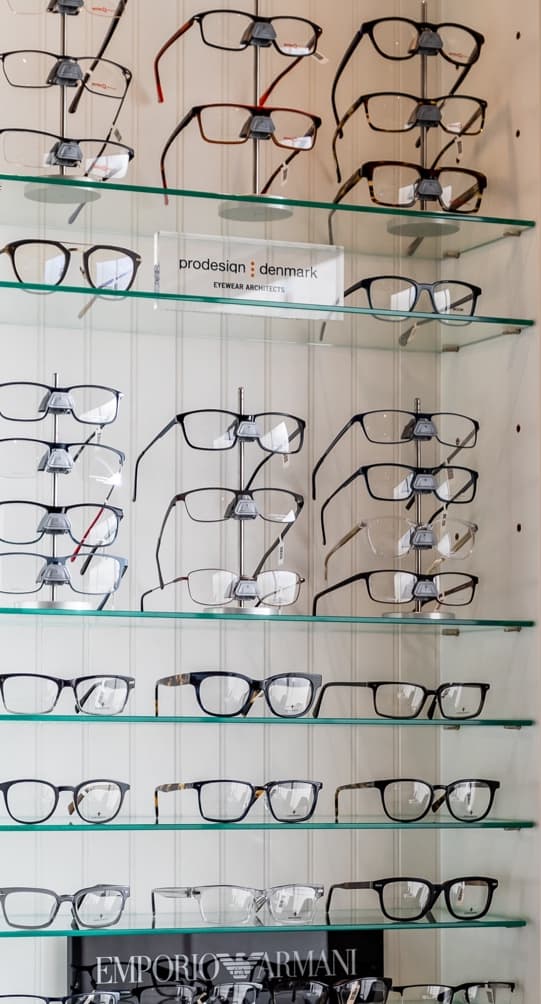Common Eye Diseases & Conditions
Glaucoma
Glaucoma is a serious eye disease and the second most common cause of blindness in the world. It occurs when pressure builds up inside the eye and damages the optic nerve. Glaucoma initially causes loss of peripheral vision, but leads to complete blindness if left unmanaged.
Most people with glaucoma do not notice any symptoms until vision loss begins, and treatments cannot restore vision damaged by glaucoma. However, eye doctors can use numerous techniques to slow its progression and possibly even prevent irreversible loss of sight.
The earlier glaucoma is detected, the faster and more effectively eye doctors can manage it. Setting up regular eye exams with your eye doctor is the best way to catch glaucoma in its early stages.
Age-Related Macular Degeneration
Age-related macular degeneration (AMD) is a common cause of blindness in people over the age of 50. It occurs when the macula — a part of the eye responsible for central vision — begins to deteriorate.
AMD can affect many everyday tasks that depend on central vision (such as reading, driving, and recognizing other people’s faces). If left unmanaged, it can eventually lead to central vision loss.
The cause of AMD is still unknown. However, various factors can drive up a person’s risk for this condition, including smoking and excessive UV light exposure. Since AMD often does not present symptoms before vision loss begins, regular comprehensive eye exams are the best way to detect it early and protect your eyesight.
Conjunctivitis
Conjunctivitis, commonly known as “pink eye,” occurs when the thin layer of tissue that covers the white of the eye, known as the conjunctiva, becomes inflamed. Many factors can cause conjunctivitis, including bacteria, viruses, and allergies.
- Bacterial conjunctivitis often causes the eyes to discharge yellow or green fluid, making a person’s eyelids stick together in the morning and “glue” their eyes closed.
- Viral conjunctivitis can cause white or yellow discharge and may also cause photophobia (increased light sensitivity). Viral conjunctivitis is easily transmitted by coughing or sneezing.
- Allergic conjunctivitis often causes the eyes to water, as well as an itching or burning sensation. It may also bring other cold-like symptoms, such as a runny or stuffy nose.
- Chemical conjunctivitis is a non-contagious form of conjunctivitis caused by exposure to chemicals. Chemical conjunctivitis can be an eye emergency, so it’s vital to see an eye doctor immediately if you get chemicals in your eyes.
It’s essential to have an eye doctor diagnose the type of conjunctivitis you have because different types require different treatments. Book an appointment with us if you think you have conjunctivitis so that we can help determine your options.
Cataracts
Cataracts develop when the eye’s lens becomes milky and cloudy, obscuring clarity and dulling the vibrancy of a person’s vision. Most people will eventually develop cataracts as they age, although they can be caused by radiation and other factors as well.
Once your optometrist diagnoses your cataracts, they may refer you to an ophthalmologist who can surgically remove the cataract. If you suspect that you are developing cataracts, please see us as soon as possible for a professionally-led treatment program.
Diabetic Eye Disease
Diabetic eye disease is the leading cause of blindness for Canadians. Having diabetes can increase a person’s risk of diabetic retinopathy and diabetic macular edema — as well as glaucoma, cataracts, and other diseases.
Regular eye exams can help identify diabetes in its earliest stages and are the only way to detect these diseases before they have severe consequences. Eye exams are therefore vital for maintaining your eye health and maintaining strong vision in people with diabetes.













